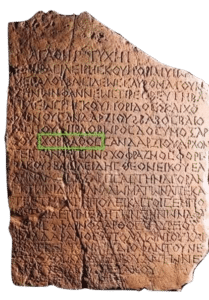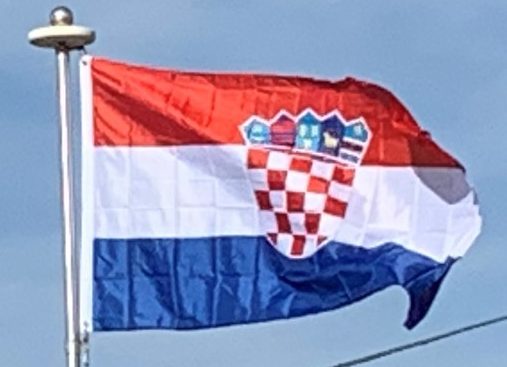The first attestation of the Latin term is attributed to a charter of Duke Trpimir from the year 852. The original is lost, and just a 1568 copy is preserved, leading to doubts over the authenticity of the claim. The oldest preserved stone inscription is the 9th-century Branimir Inscription found near Benkovac, where Duke Branimir is styled Dux Cruatorvm. The inscription is not believed to be dated accurately, but is likely to be from during the period of 879–892, during Branimir’s rule.
History:
Prehistory:
The area known as Croatia today was inhabited throughout the prehistoric period. Fossils of Neanderthals dating to the middle Palaeolithic period have been unearthed in northern Croatia, with the most famous and the best presented site in Krapina.

Remnants of several Neolithic and Chalcolithic cultures were found in all regions of the country. The largest proportion of the sites is in the river valleys of northern Croatia, and the most significant cultures whose presence was discovered include Baden, Starčevo, and Vučedol cultures. The Iron Age left traces of the early Illyrian Hallstatt culture and the Celtic La Tène culture.
Antiquity:
Much later, the region was settled by Illyrians and Liburnians, while the first Greek colonies were established on the islands of Hvar, Korčula, and Vis. In 9 AD the territory of today’s Croatia became part of the Roman Empire. Emperor Diocletian was native to the region, and he had a large palace built in Split to which he retired after his abdication in AD 305.
During the 5th century, the last de jure Western emperor Julius Nepos ruled his small realm from the palace after fleeing Italy to go into exile in 475. The period ends with Avar and Croat invasions in the first half of the 7th century and destruction of almost all Roman towns. Roman survivors retreated to more favorable sites on the coast, islands and mountains. The city of Dubrovnik was founded by such survivors from Epidaurum.

The ethno-genesis of Croats is uncertain and there are several competing theories, Slavic and Iranian being the most frequently put forward. The most widely accepted of these, the Slavic theory, proposes migration of White Croats from the territory of White Croatia during the Migration Period. Conversely, the Iranian theory proposes Iranian origin, based on Tanais Tablets containing Greek inscription of given names Χορούαθος, Χοροάθος, and Χορόαθος and their interpretation as anthroponyms of Croatian people.
Middle Ages:
According to the work De Administrando Imperio written by the 10th-century Byzantine Emperor Constantine VII, the Croats had arrived in what is today Croatia in the early 7th century. However, that claim is disputed and competing hypotheses date the event between the 6th and the 9th centuries. Eventually two dukedoms were formed—Duchy of Pannonia and Duchy of Croatia, ruled by Ljudevit and Borna, as attested by chronicles of Einhard starting in 818. The record represents the first document of Croatian realms, vassal states of Francia at the time.
